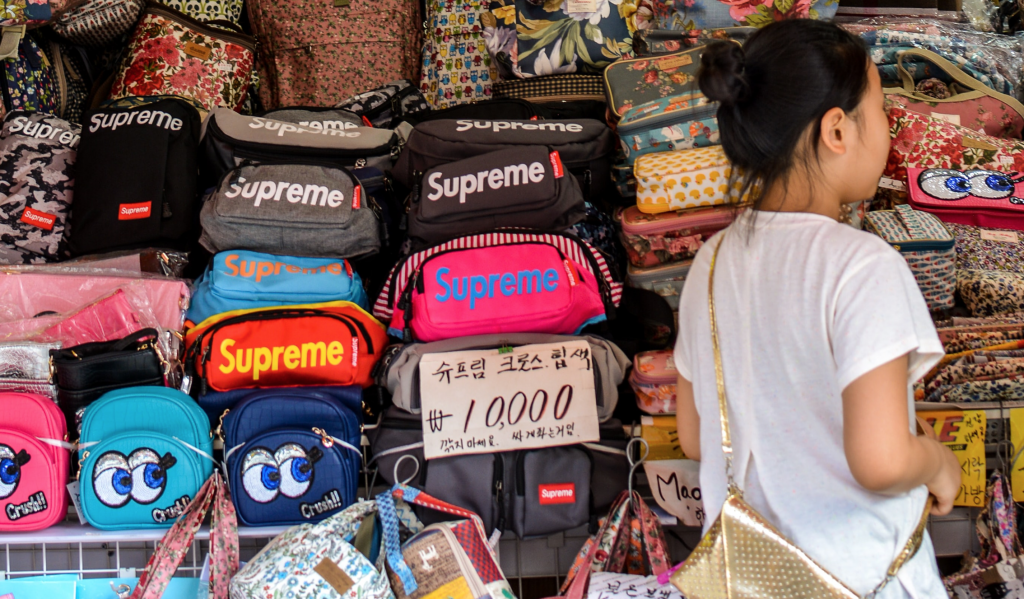The shadowy business of counterfeits has taken over the globe to become a more than $500 billion industry. According to Trends in Trade in Counterfeit and Pirated Goods, a joint report released by the Organisation for EconomicCo-operation and Development (“OECD”) and the European Union Intellectual Property Office (“EUIPO”) in 2019, the value of imported fake goods worldwide topped $509 billion based on 2016 customs seizure data, up from $461 billion in 2013, the latter of which represents 2.5% of world trade.
Despite extensive and often, expensive enforcement efforts by brands, such as Paris-based luxury goods conglomerate LVMH Moët Hennessy Louis Vuitton, which employs dozens of civil and criminal enforcement lawyers across the globe and spends a reported $17 million annually on anti-counterfeiting legal action in connection with its stable of brands, including Louis Vuitton, Dior, Celine, Givenchy, and Loewe, among many other brands, international trade in counterfeit goods, including luxury goods, is positively booming with near-constant gains. In furtherance of their report, the OECD and the EUIPO stated that the goods making up the biggest share of 2016 seizures in dollar terms were footwear, clothing, leather goods, electrical equipment, watches, medical equipment, perfumes, toys, jewellery and pharmaceuticals.
Further narrowing on the impact of counterfeiting on the fashion industry, the market for counterfeit clothing, textiles, footwear, handbags, cosmetics, and watches, alone, amounted to a whopping $450 billion – and growing – as of 2017, according to the OECD, with brands like Chanel, Louis Vuitton, Prada, Hermes, Gucci and Dior routinely among some of the most heavily targeted by counterfeit makers, an enduring trend that has been furthered as more consumers move online to make purchases of luxury goods (despite many brands dragging their feet to this day when it comes to offering up their wares via e-commerce sites), and counterfeiting technology advances, making increasingly easy for consumers to acquire sophisticated and high-quality counterfeits with the simple click of a mouse or mobile button.
In order to get a handle on the footprint of the counterfeit trade, it is essential to distinguish the term from those with which it is commonly – and erroneously – used interchangeably, including but not limited to “knock off” and “infringement.” This distinction is critical, because unlike these terms, counterfeits represent a particularly egregious form of copying and as a result, are held to a specific, heightened legal standard.
What is a counterfeit, exactly? There are a few key elements at play, all of which must be met for something to be deemed a counterfeit) at play. (These elements are set forth in 18 U.S.C. § 2320(d)).
Primarily (and most fundamentally), in order for a product to be considered a counterfeit, it must include another party’s federally registered trademark or one that is “substantially indistinguishable” from the other party’s trademark. (Note: A trademark is any word, name, symbol, device, or any combination, used or intended to be used to identify and distinguish the goods/services of one seller or provider from those of others, and to indicate the source of the goods/services).
Second, a counterfeiter must be knowingly and deliberately using another party’s trademark without the authorization to do so. This use is almost always paired with the counterfeiter’s intent to deceive the consumer by presenting itself as the trademark holder by way of the fake logo, fake tag, etc.
Third, in accordance with U.S. law, the trademark that is being counterfeited must be federally registered with the U.S. Patent and Trademark Office, and must be in use (in commerce) by the trademark holder.
Fourth, the goods that the counterfeiter is making/selling must be of the type that are covered by the trademark holder’s registrations; trademarks are registered by “class of goods or services,” remember. Clothing and footwear, for instance, is included in Class 25.
Finally, the use of the counterfeit trademark must be “likely to cause confusion, to cause the mistake, or to deceive” the average consumer in terms of the source of the product.











